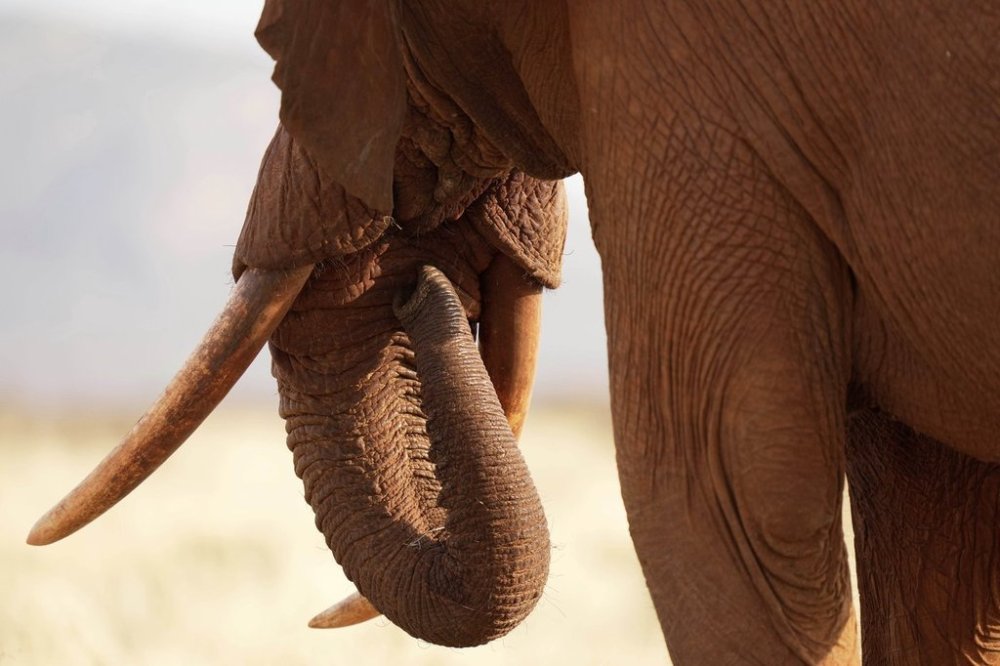Tuesday is World Elephant Day. 5 things to know about the world’s largest land mammals
Advertisement
Read this article for free:
or
Already have an account? Log in here »
To continue reading, please subscribe:
Monthly Digital Subscription
$1 per week for 24 weeks*
- Enjoy unlimited reading on winnipegfreepress.com
- Read the E-Edition, our digital replica newspaper
- Access News Break, our award-winning app
- Play interactive puzzles
*Billed as $4.00 plus GST every four weeks. After 24 weeks, price increases to the regular rate of $19.00 plus GST every four weeks. Offer available to new and qualified returning subscribers only. Cancel any time.
Monthly Digital Subscription
$4.75/week*
- Enjoy unlimited reading on winnipegfreepress.com
- Read the E-Edition, our digital replica newspaper
- Access News Break, our award-winning app
- Play interactive puzzles
*Billed as $19 plus GST every four weeks. Cancel any time.
To continue reading, please subscribe:
Add Free Press access to your Brandon Sun subscription for only an additional
$1 for the first 4 weeks*
*Your next subscription payment will increase by $1.00 and you will be charged $16.99 plus GST for four weeks. After four weeks, your payment will increase to $23.99 plus GST every four weeks.
Read unlimited articles for free today:
or
Already have an account? Log in here »
BELA-BELA, South Africa (AP) — Tuesday is World Elephant Day. Here are five things to know about the largest land animals on our planet.
Tell them apart by their ears
There are three species of elephants: the African savanna or bush elephant, the African forest elephant and the Asian elephant. The African savanna elephant and the Asian elephant are listed as endangered by the International Union for Conservation of Nature. The forest elephant is critically endangered.
The easiest way to tell the difference among the species is the ears. African elephants have larger ears that are shaped, conveniently, like the African continent. African elephants also have two finger-like prehensile extensions at the tips of their trunks to grip things with, while Asian elephants have one.

Biggest of the big
The African savanna elephant is the biggest of the three species and the largest land animal on Earth. Adult males weigh around 5,000 to 6,000 kilograms, which is 11,000 to 13,000 pounds — or about six tons. Savanna elephants already weigh about 120 kilograms — 265 pounds — when they’re born, heavier than your average NFL player.
Trunks with thousands of muscles
There are around 150,000 muscles in an elephant’s trunk, making it an “incredible piece of equipment,” according to Sean Hensman, an elephant specialist at the Adventures with Elephants sanctuary in South Africa. Because their trunks have no bones, elephants can curl or twist them in all sorts of directions, and even make them shorter or longer. They use them to suck up water to blow into their mouths and to pick up food, or just about anything else they need to do.
Too heavy to jump
Elephants can’t jump. That’s because of the enormous weight they are carrying. Elephants need at least three feet on the ground at any one time in order to move. They can, however, stand on their back legs if they need to reach food like fruits or leaves high on a tree.
An elephant never forgets?
One of the most popular presumptions is that elephants have an incredible memory. That is true, Hensman said. They have a huge temporal lobe — the part of the brain that controls memory. Elephants need a good memory of the locations of numerous food and water sources to survive in some of the harshest climates.
AP Africa news: https://apnews.com/hub/africa

